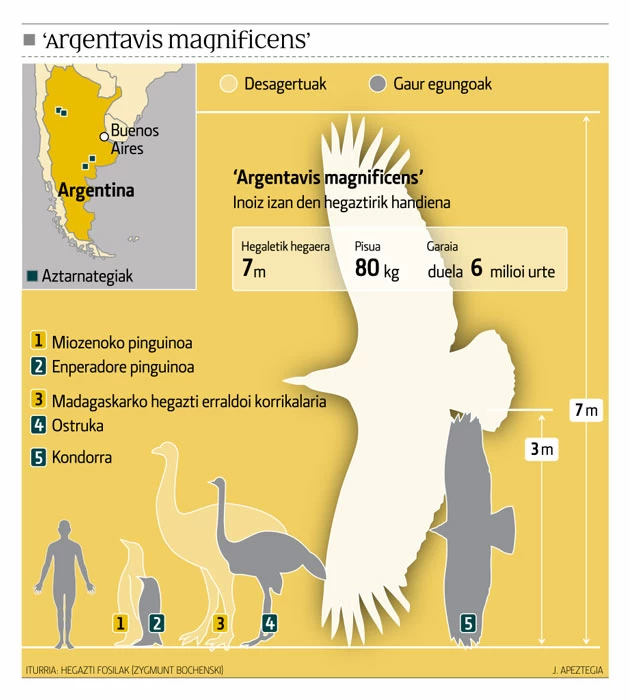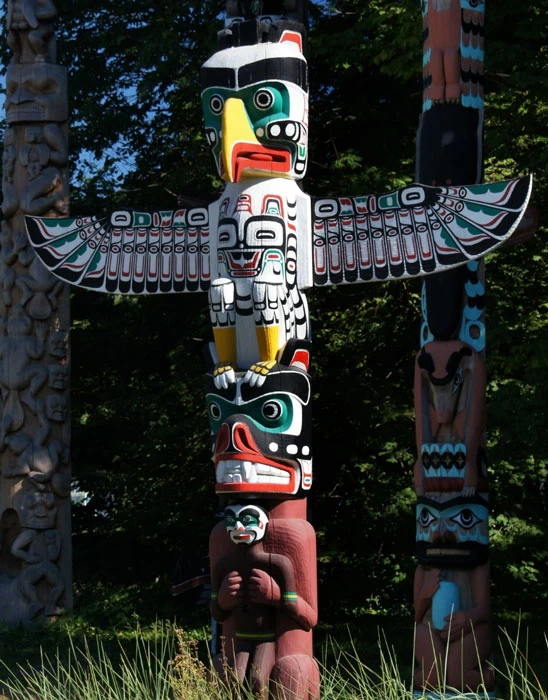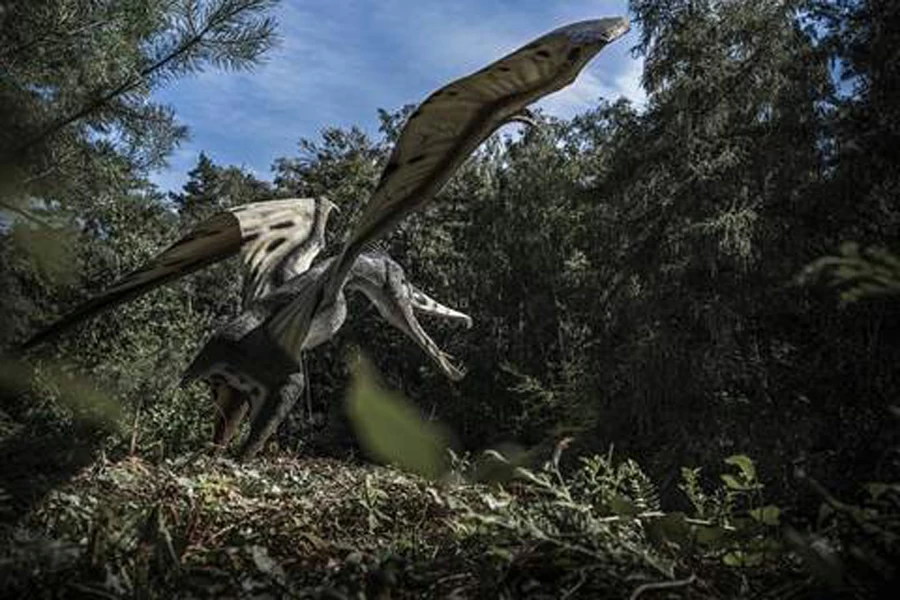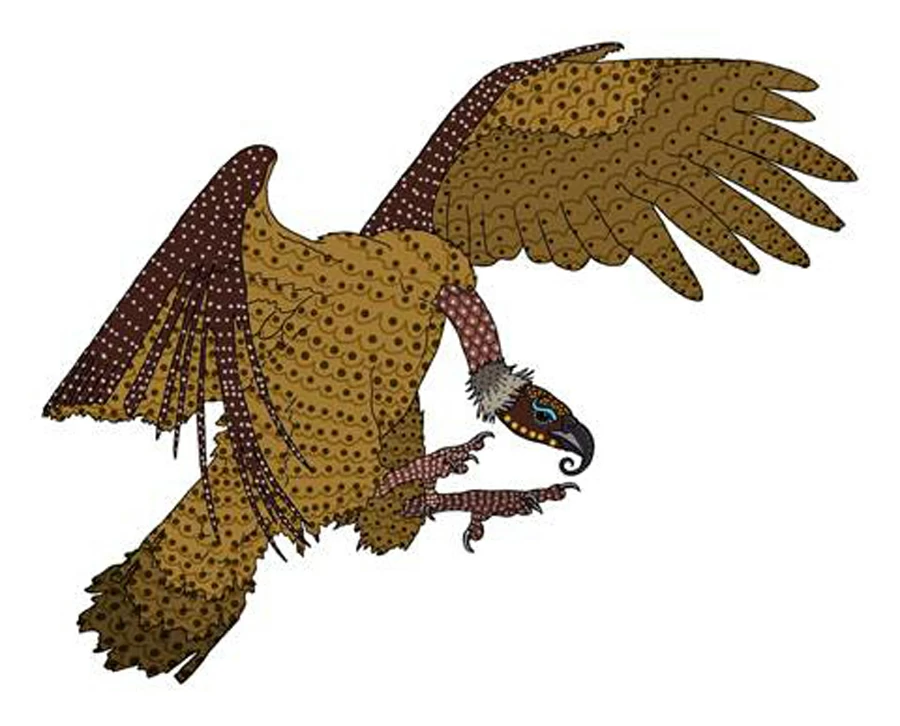When the first settlers arrived in the New World, they faced a vast continent stretching endlessly in front of them. The land was full of strange peoples and unfamiliar species.
The Native Americans knew the land far better and could offer help to those who had the wit to ask for it. And one of the powerful creatures that the natives told about was a giant flying bird, which created thunder and lightning as it flew through the sky. This was the thunderbird.
Most commonly associated with the more northern cultures, who battled harsh winters among their pine forests and cold lands, the thunderbird was worshipped as a powerful spirit that takes the form of a bird. In this form, it helps to water the earth and to allow vegetation to grow.
It was believed to flash lightning from its beak, and that the beating of its wings caused thunder to reverberate. It was often accompanied by lesser bird spirits like an eagle or falcon.
Despite being best known from North America, there is evidence of similar figures being mythologized in Africa, Asia, and Europe. The thunderbird has been depicted in art, songs, and oral histories through North America from the Pacific Northwest to American Southwest and Great Plains.
It is easy to dismiss such descriptions as personifications of natural forces such as thunderstorms: the thunderbird must be big to create the sounds and sights of a thunderstorm, just as it clearly must be airborne.
But these stories come from areas of vast, deserted wilderness, areas which could potentially support a large species without detection, even to this day. And Native Americans worshipped other creatures, such as the bear or cougar, which were demonstrably real.

We know such large birds existed in the past, such as the magnificent Argentavis which was the size of a light aircraft. Put simply, could the thunderbird be real as well?
A Mysterious Bird
The appearance of the thunderbird is difficult to pin down, and it has a variety of descriptions that range from tribe to tribe. Almost the only consistent thread between the stories is that the bird has supernatural powers.
It is an enormous soaring bird, similar to an eagle or condor but much larger and stronger. Using its large wings, the thunderbird could create thunderstorms, bringing rain and storms that were both good and bad. The Native Americans held the thunderbird in high regard, believing it would protect them from evil spirits.
It is important to separate what a thunderbird might actually be, from some of the more fanciful legends that are associated with it. It would not be able to shoot lightning from its beak from example. Nor be so large that it could pick up a whale in its talons.
These seem to be exaggerated tales to emphasize the power of the creature, and (unless the thunderbird ranges across the entire North American continent) many of these stories may indeed be mythical, or at least hearsay. Other stories with more grounded descriptions may help us to get closer to what the real bird might look like.
- Wendigo: Cannibal Beast of Native American Legend
- Orang Pendek: Is There An Unknown Great Ape In Remotest Sumatra?
For instance, thunderbirds were said to have bright and colorful feathers and extremely sharp teeth and claws. They were also said to live usually in the clouds high above the tallest mountains, a habitat modern science would agree to be most suitable for such a large bird.
Different Stories for Different Tribes
One of the most prominent sources for the thunderbird comes from the peoples of the Northeast Americas including Eastern Canada and the United States. These people are often known as the Algonquian people.

In Algonquian mythology, the thunderbird is ascribed the role of a god, controlling the upper world while the underworld is controlled by the underwater panther or great horned serpent. The Thunderbird uses its thunder and lightning to fight the underworld creatures.
In this tradition, the Thunderbird was depicted as a huge bird with wings held wide and horizontal and head in profile. However it can also be presented as an x-shape with the head facing forward.
The Ojibwe Tribe on the northern borders of the Great Lakes claim the thunderbirds were created by Nanabozho, the trickster figure and culture hero of the Native American people. Their express purpose was to fight the underwater spirits of the underworld.
Also, thunderbirds were said to punish those who broke moral rules. They lived in the four directions and migrated with the birds in the spring, travelling south after winter.
Fact Beneath the Legend?
These stories are clearly part of a mythology and cannot be true of a living creature. But again, like Ratatosk the squirrel in Norse mythology, or the serpent in the Garden of Eden, this does not discount the creature under the legends from being real.
The tribes certainly used thunderbirds to describe various natural occurrences. The Native American Passamaquoddies describe the quest of two friends in search of the source of thunder in the mountains.
Whilst only one made it to the top, he found a group playing a ball game. They were startled and ran into their wigwams, coming out with wings and equipped with bows and arrows.
They flew away and he believed that he had found the true home of the thunderbird. Returning, he discussed this with his village elders who crushed his bones into the shape of a thunderbird with giant wings and gave him a bow and arrows.
Another story tells of how the thunderbird fought with the great creature of the sea, a giant killer whale. The ferocity of the fight destroyed much of the surrounding land and caused huge amounts of destruction, knocking over trees and leaving scars upon the land.

Whilst powerful and dangerous, they were sometimes benevolent and aided humans in their search for both food and water. This was especially useful during times of famine. They were also said to have left their eggs, igneous rocks known as thunderstones, waiting to hatch and protect the nearby peoples in the future.
The Reality
So, a large and dangerous bird, not necessarily hostile unless provoked, which inhabits the highest peaks and which is only driven low enough to be seen when the weather in fierce. This does not seem outside the realms of possibility, and there is a surprising amount of evidence for a real bird.
There is a story from April 1890 where two cowboys in Arizona killed a giant birdlike creature that had a huge wingspan. It had smooth skin, featherless wings, and a face that resembled an alligator. It is more similar to a prehistoric pterodactyl than the traditional thunderbird.
The story goes that they are supposed to have dragged the creature back to town and it was measured with a wingspan the size of a barn. Supposedly a photo was taken but it has been lost.
In the 20th century, there have been more thunderbird sightings, often leaving physical evidence in the form of large footprints. One of the most controversial reports comes from 25th July 1977 in Lawndale, Illinois.

Around 9pm in the evening, a group of three boys was playing in a backyard in a residential area. Two large birds chased the boys and one, named Marlon Lowe, was caught by a bird. He fought it and it released him, dropping him 2 feet.
It was dismissed as a tall tale as the descriptions seemed more like an andean condor. But an attack by a condor would be almost as unlikely as the thunderbird itself.
There have even been more recent sightings of the thunderbird. As late as 2007, young students have claimed to have seen them flying silhouetted against the sky. These birds often appear small as they fly at high altitudes, with their true enormous size only becoming apparent as they get closer.
Though as of yet, no one has attributed any supernatural effects to these birds. While these are certainly myth, could the Native Americans have ascribed these powerful features to a huge bird they saw in the sky, just like the more modern eye-witness accounts?
Thunderbirds
Thunderbirds, like many of the large species of the north American continent, have a long association with Native American peoples. The Winnebago tribe say that a man who has a vision of a thunderbird during a solitary fast will become a war chief. They also believe that the thunderbird has the power to grant people great abilities.
The thunderbird of the Sioux people was a noble creature that protected humans from the Unktehila, who were dangerous reptilian monsters. Some believed that they were shapeshifters, who often changed their appearance to interact with people. To the Shawnee tribe, they appeared as boys and could be identified by their tendency to speak backward.
In some tribes, thunderbirds were considered extremely sacred forces of nature, while in others, they were treated like powerful, but otherwise ordinary members of the animal kingdom. Many legends reference the anger of the thunderbirds as something fearsome to behold, which could result in harsh punishments.

Some say that the mythology began with the ancient mound builders. Throughout history, the thunderbird symbol has appeared on totem poles, pottery, petroglyphs, masks, jewelry, and carvings. The legends have been told through songs and oral histories.
Why were all these peoples united in their depiction of a thunderbird, and only varied in the powers they ascribed to it? What was the creature they used as the base of their mythology?
It could still be out there, somewhere in the vast and untouched north American wilderness.
Top Image: Could the legend of the thunderbird be based on a real creature? Source: Inga Av / Adobe Stock.
By Kurt Readman